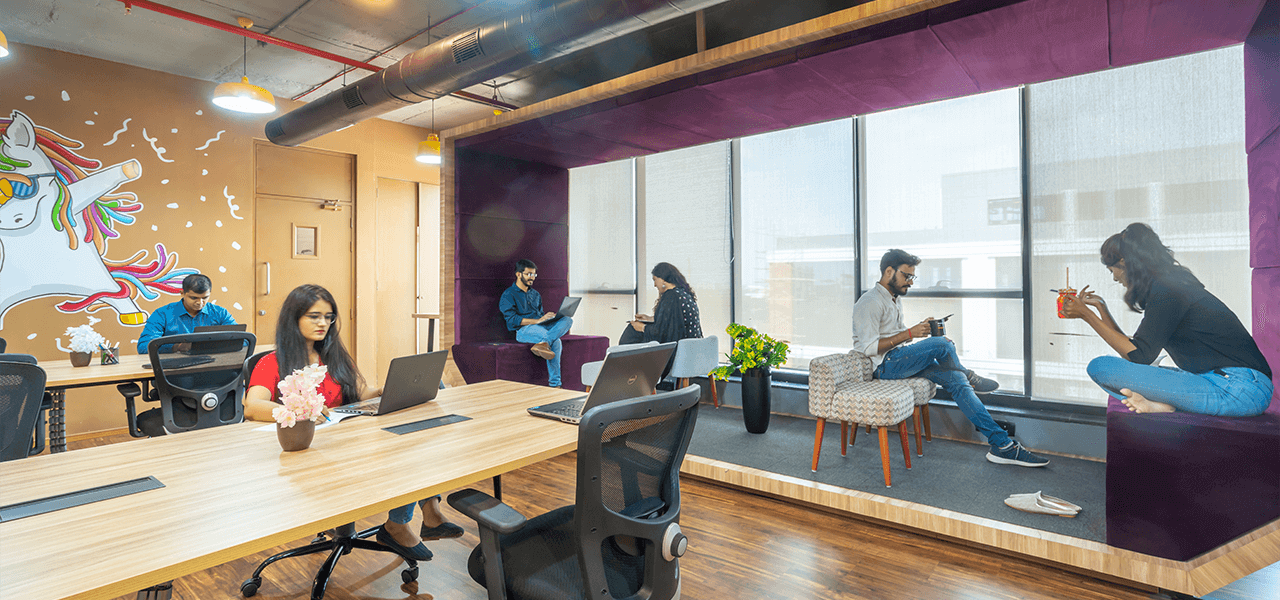Average monthly office rentals rise across cities, highest in NCR and Hyderabad at 5%
New Delhi, NFAPost: The decision of businesses to ask employees to return to office has spiked the demand for co-working spaces by 14 percentage points year-on-year in the first half (H1) of this calendar year, says a report by Anarock. This increase came despite a significant reduction in the information technology sector’s share of such spaces.
In H1, the share of co-working spaces was 20 per cent out of a net absorption of about 20.8 million square feet across the top seven cities in the country-—the National Capital Region (NCR), Mumbai Metropolitan Region (MMR), Bengaluru, Pune, Hyderabad, Chennai, and Kolkata. In contrast, in H1 2021, the share of co-working spaces was just six per cent of net office absorption of about 9.33 million sq ft, according to the report.
Among the cities, Bengaluru and Hyderabad accounted for 50 per cent of net absorption, accounting for 10.35 million sq ft of office space absorption. In all, the three southern cities, including Chennai, recorded net office absorption of about 12.2 million sq ft. They were followed by the western markets of Mumbai Metropolitan Region (MMR) and Pune with 5.45 million sq ft, of which 27 per cent was by co-working players.
IT demand dips
Interestingly, the report says the share in absorption of the IT/ITeS sector, India’s leading office demand driver, declined from 49% in H1 2021 to 36% in H2 2022. This is largely because many IT firms now prefer flexible office spaces to regular ones, Anarock said.
“Co-working has received a major boost after Covid-19 disrupted the previous status quo,” said Anuj Puri, chairman, Anarock Group. A major factor driving demand is that these spaces are not concentrated in the city centres or major employment hubs, but are spread across different areas, including the suburbs, he added.
He said co-working spaces are now also operating out of malls and hotels across cities and many large office parks also house them. Puri said: “This helps firms remain closer to their staff and offer them flexibility.”
Listing the factors for rise in demand, the Anarock report said another advantage is that with flexible office spaces, companies can plug and play at the same cost instead of wrestling with office layouts and fit-outs. The lock-in period for taking up a regular office space is anywhere between 2-4 years. All these factors have also helped boost the demand for co-working spaces.
Rents rise
Backed by rising office space demand, monthly rentals also rose across cities. The NCR and Hyderabad recorded a 5 per cent YoY rise in average monthly office rentals in H1, followed by Bengaluru and Pune at 4 per cent each.
Average office rentals in MMR were the highest among the top seven cities, at Rs 128 per sq ft, and were the lowest in Kolkata at Rs 53 per sq ft.
Robust supply
Meanwhile, the top seven cities also witnessed robust new office supply in H1 of about 31.8 million sq ft. Bengaluru, Hyderabad, and Pune dominated with a combined share of 74 per cent. Given the spate of new completions, average vacancy levels across cities rose by 2 per cent and stood at 15.95 per cent in H1.




